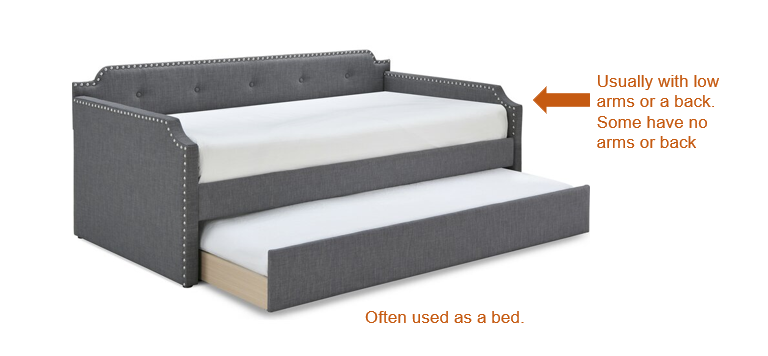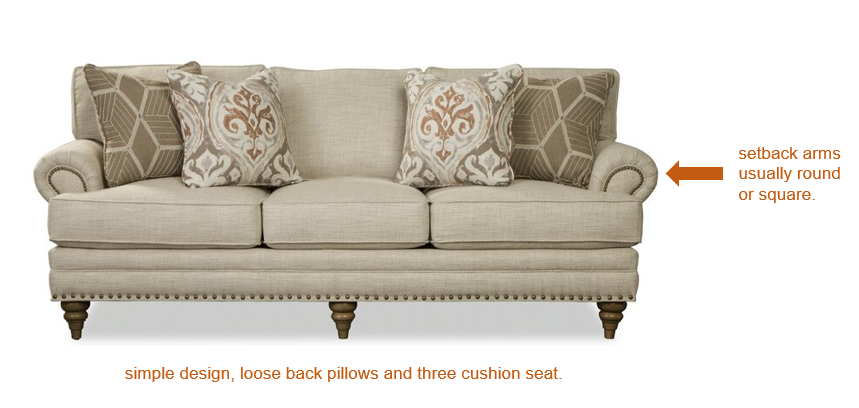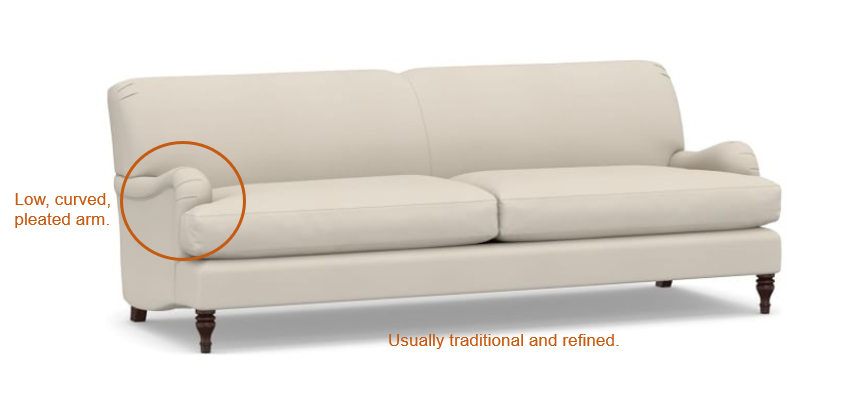So I’ve been watching tons of YouTube lately.
Mostly because I love video as a form of inspiration.
Don’t get me wrong, Pinterest is wonderful for planning.
I love to save images to boards so I can refer back to them. But video; that’s where I go when I’m getting ready to pick up my paint brush or when I need to learn how to use a tool. It’s the place I go when my project is imminent, and I’m done planning.
This week I tiled my entire kitchen and I need a few refresher points because I haven’t tiled in many years. So off I went to my trusted YouTube.
While I was binge watching 5 minute videos on the do’s and don’ts of tiling, I kept seeing video recommendations on how to pick Mid Century Modern sofas.
I have no idea what that has to do with tiling but, who am I to try to figure out the suggested videos on YouTube. It’s an algorithm thing and I am sure I’ve searched furniture related videos here and there, and that’s probably why..
Anyway, I watched video after video of “here’s how to recognize Mid-Century Modern Sofas” from a handful of novice decorators. What I saw had as much to do with Mid Century Modern sofas as if Abraham Lincoln hitched a ride on a SpaceX rocket for a stroll on the moon.
Yes, quite a few of the videos showed a Mid Century looking sofa, and I’m good with that. I think a reproduction that gives you that look and aesthetic is great. But, don’t tell your audience that a fuchsia tufted Chesterfield loveseat will check the Mid Century vibe you’re wanting.
When you’re planning a makeover with a specific aesthetic, it’s important to understand why a sofa or couch fits into a particular style. It’s also important to know basic terminology for a particular style so you can adequately communicate exactly what you want to a furniture store salesperson or designer.
So, If you’re truly looking for a specific kind of sofa or couch to anchor your living room design, come along on this short read to learn about 14 timeless sofa designs for your perfect living room makeover.
Modular
Modular sofas are actually sectional pieces. That means that they are individual pieces that will hinge, clip or slide together to form whatever configuration you want. Once they’re together, the mechanism in place will keep them from separating until you perform some maneuver, like unlatching a clip or pulling up on a cleat, in order to get them apart.
Modular sofas are a great option for small homes with tricky entrances, basement or second floor installs because they can be brought in one piece at a time.
You can usually find any style of sectional sofa to check you design aesthetic: traditional, transitional, contemporary, and so on.
Source: Wayfair
Chesterfield
A Chesterfield is a timeless, classic option if you’re looking for a piece that has presence and depth.
You can find them in any number of coverings from linen to velvet and leather.
Source: Wayfair
Chesterfields are typically heavily tufted sofas where the back and the sides are all the same height. The seats are also typically quite deep with a bench type or tight constructed seat.
They are great options for more formal installations in living rooms, parlors or a study.
Mid-Century Modern
Ah yes, the impetus for this post.
A true Mid Century Modern sofa has a specific look. These gems were popular from the late 1930’s to the late 1950’s. Some furniture experts will extend that time into the early 1960’s.
Source: Wayfair
Mid Century Modern furniture can be characterized by the lines, meaning the shape of the furniture: slimmed down, simple and absent of unnecessary adornment.
The use of post World War II materials like plywood, plastic and lucite gave MCM furniture its distinct character.
The colors were often bold and textural because the architecture was simple and neutral. The furniture could then become the star. Think orange Naugahyde.
The shape of MCM furniture is sculptural and ethereal, so you won’t find heavy sofas with skits and overstuffed cushions. Nope, this design style is all about visual simplicity.
Now, there are many really good reproductions on the market today. But if you’re really looking for that specific MCM aesthetic, don’t let anyone try to convince that a bulky, heavy piece with copious tufting and details galore is a Mid Century Modern sofa. Many luxury sofas can capture the elegance of this style while maintaining the clean lines and simplicity.
Contemporary
Next, we have contemporary and this style gets mixed in with Modern all the time.
Modern is a style that came out of the post-industrial age up to the period just after World War II. Mid Century Modern came out of Modernism because the
Modernists favored to simple lines over the opulence and intricacies of the late 19th Century.
Source: Wayfair
Conversely, contemporary is not a movement or indicative aesthetic of any time period. It is a reference to the popular style of any point in time. It is the stylish trend of the moment.
So, contemporary can be many things and have many style cues. Certainly, a dominant style can emerge at any time, but contemporary will always be the style du jour.
Bridgewater Sofa
This is the classic lounging, casual sofa.
Source: Raymour & Flanigan
Bridgewater sofas are usually simple, low arm, deep sofas that are great for curing up in with a good book or for sacking out on for a long movie.
They’re not fussy and are designed for comfort and conversation.
Usually, they have an English pleated arm and may have a high kick pleat skirt.
You won’t see tufting or a lot of unnecessary detail on a Bridgewater with the exception of the occasional nail head trim to define the curve of the arm or run across the base
Camelback
Oxford dictionary defines Camelback as: “A back with a hump-shaped curve on a sofa or other piece of furniture.”
You’ll find simple versions and you’ll come across very ornate camelback sofas.
Source: One Kings Lane
What they all have in common is: one to two arches across the back and a sinuous and continuous curved frame that often features ornate carved wood or at least some wooden frame detail. The picture above shows a plinth wood base, thin tapered legs and a contemporary construction for this classic frame.
Cabriole Sofa
This is a throw back style to the time of Lois XV. The characteristics are quite definite and this sofa can be identified by its exposed, carved wood frame, concave curved legs and tight seat and back construction.
Source: Wayfair
You’ll recognize it by its continuous frame: the arms and the back are the same height and the upholstery is almost always comprised of velvet or a sumptuous tapestry.
The style is formal and almost always features tight back and seat construction because these sofas were made for sitting upright, eating, working, study, conversation.
They were not originally made for leisure or lounging, although they were used in place of beds by some.
Settee
Merriam-Webster defines settee as “a medium-sized sofa with arms and a back.” That’s not very specific, so here’s a little more to go on.
Source: One Kings Lane
A settee a smallish bench with a high back and arms. It’s usually upholstered and can seat two or more people. It’s similar to a loveseat, which can be any style of sofa, but the real difference is that a loveseat is suited to seat only two people.
A settee can be a wood bench with arms and a back in a front entryway or the same piece could be positioned at a dining table for seating 2 or 3 people in place of a bench.
Divan
Source: Wayfair
In my opinion, a divan is a daybed. I’m sure that the purists out there will come for me but a divan can sometimes have no arms or back. If that ain’t a bed, call me a monkey’s uncle.
In the picture above, this divan has a back and low arms and it converts into a bed.
So, I stand by my assessment that a divan, originating in Turkey and popularized in Europe at the start of the 1700’s, is what we would consider a daybed today.
A more colloquial image of the divan would be what you imagine laying on in a psychiatrist office.
Lawson
This style of sofa was named for a financier, Thomas Lawson, at the start of the 20th century. He helped usher in the Modernist movement, desiring to break away from the ornate styling of the Victorian age in favor of simpler lines and styling.
Source: Wayfair
A Lawson sofa was made for comfort because the arms are low and slightly curved, just slightly jutting out above the seat cushions. This is intentional as the perfect angle to cradle your head for a nice afternoon nap.
The great thing about a Lawson style sofa is that it can be super casual or dressed up more a more formal space. It’s versatile and comfortable.
Tuxedo
This style is another option where the arm height is equal to the back height.
Tuxedo sofas are usually square and boxy and can feature button tufting or channel tufting. They may be decorated with nail trim or a contrast welt to define and highlight its rectangular shape.
Source: Wayfair
Many times, a tuxedo sofa will come with round bolster pillows instead of square accent pillows as a way to reinforce and differentiate the angular style of the sofa. It’s another sofa style that became popular in the Mid 20th Century.
English Rolled Arm
If you’re looking for a deep seat and a firm, supportive back, then the English rolled arm sofa is one to consider.
It features a deep seat, usually two cushions, a slight tilt back from the front of the frame to the tight back to provide a little extra comfort. The arms are set back allowing the seat cushions to hug the arms in a classic “T” cushion style, which also makes the deep frame look slightly smaller from the side.
Source: Pottery Barn
It’s a style that dates back to the 1800’s in England and one that has been present in every decade of the 20th and now 21st Centuries.
There has been updates and iterations to suite the tastes of people throughout the years, but its classic styling is a surfeit for a classic, comfortable aesthetic you might be longing for.
Knole
Formal, rooted in royalty and is one of the first representations of multi-functional furniture in history.
Source: Baker Furniture
The Knole is a convertible sofa where the arms can be lowered to lay horizontal in line with the seat.
It’s a settee style sofa that first come to prominence in the 1700’s and originated in Sevenoaks, Kent in the UK. It’s name is derived from Knole House, where the Archbishop of Kent resided. The Sofa was a sort of throne where the Monarch would sit to receive guests on Royal visits.
It’s not quite easily found in many contemporary furniture stores, but it is a heck of a unique sofa design and a definite conversation piece.
Futon
Ah the futon. Makes me think of my college days. My futon followed me from my high school bedroom, to college and on to my first apartment. Although, the futon versions today are much more stylish. If you’re in a studio apartment or a one bedroom flat without a guest room, a futon can be the answer to making one space function as two.
These days there’s lot’s of comfort options and futons, as of late, can be as high end as a custom sofa.
Not like my big box, 199.99 college budget special. Hey, I’m not gonna knock it. I loved that thing!
Source: Wayfair
This is not a pullout sofa where the mattress is tucked away under the frame of the sofa. Pull out sofas still have seat and back cushions, and they’re definitely a couch more than a bed.
Futons, on the other hand, have a mattress that IS the seat and back cushion all in one and it’s meant to convert into a bed nightly or at least more often than a sofa sleeper. So, a futon is a bed that happens to convert into a sofa and a sofa sleeper is a couch that converts into a bed.
That’s it!
Everything you need to know in order to pick the right sofa for your living room makeover.
Now you have a arsenal of furniture specific terms and a lexicon to communicate with a seasoned furniture store pro. This will help you tell your designer or store salesperson exactly what you’re looking for so you can get exactly what you want.
Happy sofa shopping!
I’d love to hear from you in the comments below. I read them all and I will respond.
And, if you’re so inclined, I’d love to connect with you in Instagram, Pinterest and Facebook. I’m on all 3 @interiorsmh.
Join the Fun
If you enjoyed this post and you want to keep seeing my weekly blog, the best way to do that is to subscribe.
You can subscribe by downloading my 11 Secrets Only Designers Know to Make Your Space Rock. If you’re curious about how decorators and designers make a home look magazine ready, you’ll love taking a gander at these 11 secrets. You’ll learn how to style your room from the floor up and it will work for ANY space you have.
I write about small space design and decorating, sustainable furniture options, positive self care and a variety of do-it-yourself home décor.
I’d love to connect with you!
“This man is a plant shaman. He not only designs beautiful rooms, he’s got a green thumb that works like magic! My peace palm never looked better.”
“Michael Helped me to get my home office in magazine ready form. Thank you a million times for helping me figure this room out. It’s now my favorite room!”
Michael is Principal designer and blogger at Michael Helwig Interiors in beautiful Buffalo, New York. Since 2011, he’s a space planning expert, offering online interior e-design services for folks living in small homes, or for those with awkward and tricky layouts. He’s a frequent expert contributor to many National media publications and news outlets on topics related to decorating, interior design, diy projects, and more. Michael happily shares his experience to help folks avoid expensive mistakes and decorating disappointments. You can follow him on Pinterest, Instagram and Facebook @interiorsmh.






















